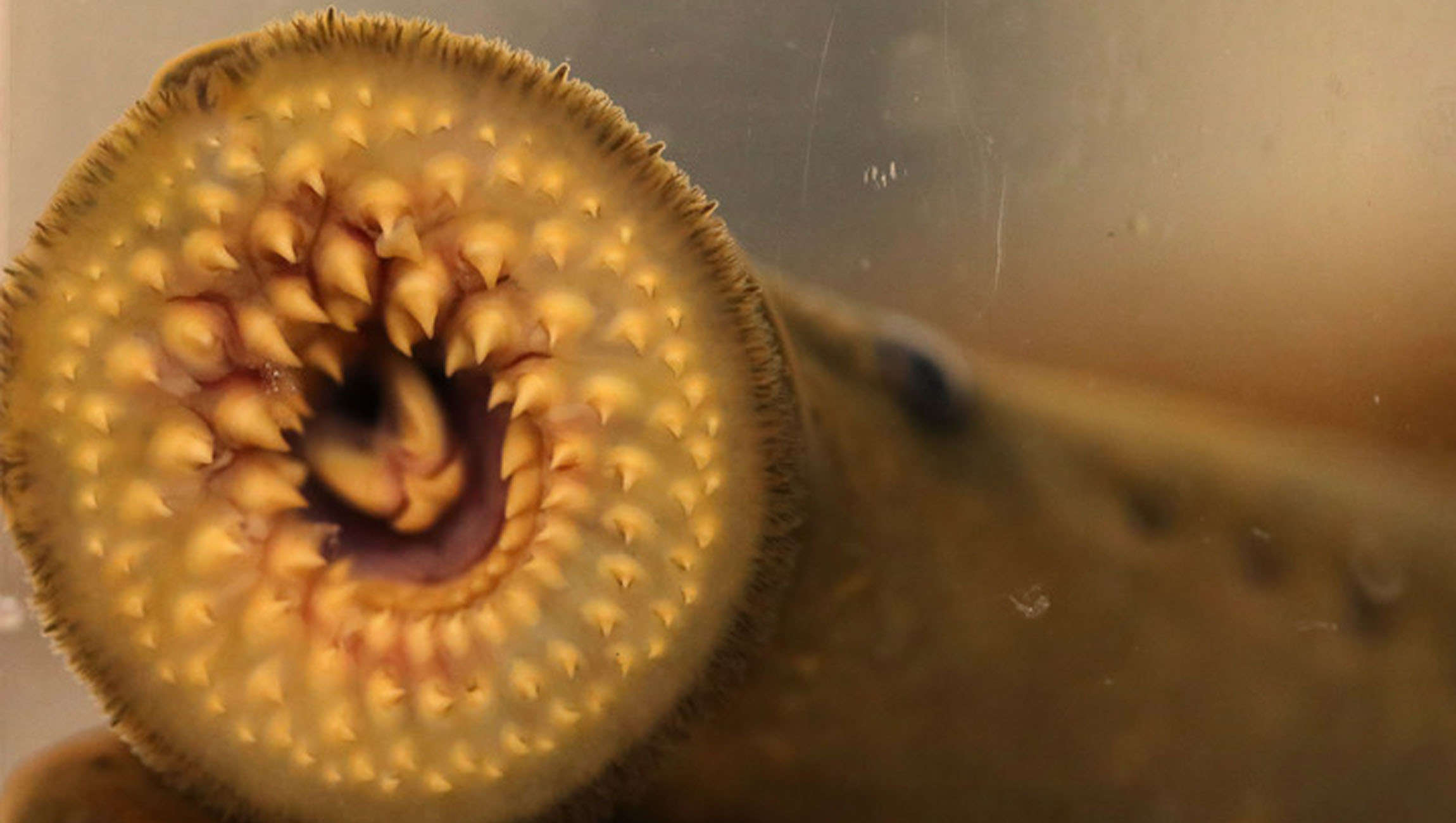Create a free profile to get unlimited access to exclusive videos, sweepstakes, and more!
Vampire fish suck delicious blood from their prey, but these monsters’ DNA is now being used to stake them

B-horror has nothing on a phenomenon that might as well be called Attack of the Vampire Fish. Imagine a bizarre fish that latches onto prey with a suction cup mouth, drills a hole in their flesh with its tongue, and slowly sucks out their blood and liquefies their tissues while they are still alive.
However much this might sound like a bizarre movie that crawled out of the ‘80s, sea lampreys are a real threat — and infesting the Great Lakes. You know something is a nightmare when it becomes resistant to the pesticides meant to annihilate it. Now scientists are getting revenge by trying to hack this thing’s DNA before it takes over.
Lampreys have the potential to drain the life essence out of over 100 million pounds of Great Lakes fish if they keep breeding. They have no jaw, bones or actual teeth but can murder fish up to 100 times their size and could eventually end up killing the ecosystem from the top down. Never mind that has and still can wreak havoc on fisheries. Lampricide (it isn’t just mosquitoes and murder hornets that get doused with poison) isn’t working as well as it used to since these parasites just keep adapting. Biologist Nick Schloesser is coming up with something more effective. Environmental DNA (eDNA) monitoring could help keep what is the world’s largest collective body of water from being sucked dry by the lamprey.
eDNA is DNA that organisms leave behind in their environments. Lamprey DNA, and the eDNA of any aquatic life-form, can easily get diluted and scattered throughout the water by currents and other disturbances in the water. That doesn't stop scientists from tracking this monster down. Scholoesser graduated from University of Wisconsin-LaCrosse, which has been collaborating the U.S. Geological Survey since the 1970s. He has been able to use his research and experience to help wildlife organizations use eDNA to screen for lampreys as efficiently as possible. Like many UWL graduates, he now works with the USGS to keep advancing lamprey control.
The only way lampreys could previously be sought out and eradicated was through tedious and expensive physical monitoring. Knowing exactly where to carry out extermination methods such as lampricide and barrier dams can save enormous amounts of time and money. eDNA allows for a much faster and more expansive investigation at a fraction of the time and cost. Lampreys spawn in tributaries and give themselves away without realizing it because they are constantly sloughing cells of their bodies, leaving eDNA in their wake. Both U.S. and Canadian Fish and Wildlife Services are taking advantage of this by searching for this evidence to determine how high the lamprey population is. They are pretty harmless filter feeders as larvae, but lampreys can blow up to 40 to 50 times their size by the time they reach adulthood. Scary.
Future methods of lamprey suppression could go beyond tracking their DNA to actually hacking it. Scientists are looking into methods of biocontrol that involve genetically modifying the vampire’s prey while genetically sterilizing the predator itself. There are just too many gaps in knowledge to pull that off successfully right now.



























